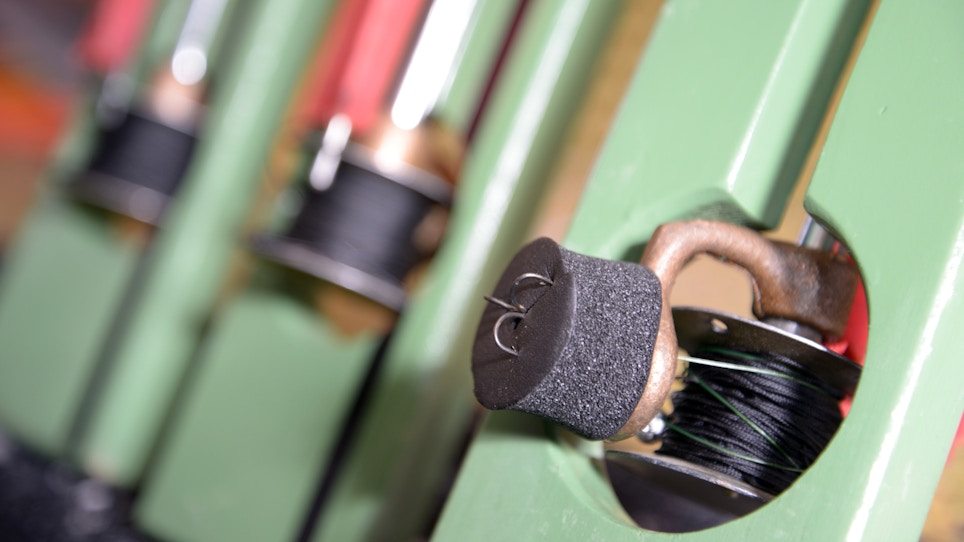This story is part of a series on ice-fishing culture. To read all series posts, click here.
One of the many statements written on the interior walls of the shack is a quote from yours truly: It’s Boom Lake. You don’t need a map.
While I stand behind the sentiment — how well you know this lake doesn’t seem to have any discernible impact on pulling pike through the ice — from time to time I find myself staring at a map, following contour lines and looking out the windows to line up landmarks, trying to decide where to go.
Duke’s Bay has a maximum depth of about 8 or 9 feet. It holds some vegetation and a couple downed trees, but it’s not especially weedy or structured. I started out on day one with my tip-ups in a shallow V pointed into Duke’s Bay from across its mouth. On day two I set up a similar pattern on the opposite side of the shack toward a little island, but no luck. In subsequent days I fished all over the bay, in deeper holes, around trees and around everywhere else. The results were the same: nothing.
After six days of fishing Duke’s Bay, we moved to another area we frequently fish. It’s a long, narrow bay — shallow and weedy. I’m fishing various depths, from 8 feet in holes just outside the bay to less than 4 feet in holes deep in the bay. Deeper in the bay I try to find the little holes with an extra foot or two of water. The action has been better but not great, with flags coming from lines at a variety of depths.
Rigging up
I’m baiting with large shiners. If you’re using tip-ups around here, you’re typically after walleyes or northerns. Guys targeting walleyes typically use suckers and fish them close to the bottom. The pike hunters prefer shiners and usually fish them anywhere from just below the ice to halfway down the water column.
As far as tackle goes, anywhere from No. 8 to No. 2 treble hooks will do the job. I like a No. 6 or No. 4. I usually connect them to a braided wire leader, something between 8 and 12 inches. A 9-inch black braided wire leader rated for either 15 or 20 pounds is my preference. Leaders are tied to my 20-pound braided tip-up line. It’s a pretty standard setup. Sometimes I use red trebles, but the fish seem to ignore them equally as aggressively as any other hook I use.
I have 7 tip-ups in my bucket. Three Beaver Dams, three South Bends and one rubbery plastic Frabill I never use. It works fine, and one of my friends uses them all the time, but I like a nice piece of wood on top of the ice. That’s just the way I’m cut. I’ve customized my Beaver Dams. I sanded them down, put three coats of Snake Chaser green on them, ran an off-center gloss black stripe from front to back and then sprayed three coats of clear. Those are my primary boards.
The three South Bends were a Christmas present from my brother when I was probably 20. South Bends are maligned among the guys who wouldn’t connect a minnow to anything other than a Beaver Dam. I’ll say this: I’ve had those South Bends for almost 25 years. They’ve been abused, run over by snowmobiles, and literally used hard and put away wet. I’ve never maintained them in any way other than putting new line on them, and until this year, all three have worked perfectly. One of them has a pretty sticky spool now, but it’s not leaving my bucket. That’d be like sending your bird dog to the pound when it doesn’t have the energy anymore to quarter in front of you all day. I’ve spent a lot of days and caught a lot of fish with those boards.
So, it’s time to re-rig my custom Snake Chaser Beaver Dams, and here’s how I’m doing it: I’m tying my 20-pound braided line to 9-inch black Berkeley Steelon wire-wound leaders, with No. 4 Mustad Ultra Point trebles. They have a shiny steel-black color that looks nice. If it appeals to me I assume it will appeal to the larger pike in these waters. We think alike.
Two boards are getting freshly set up that way. The third I just set up the other day and I’m leaving as is, with a hand-tied green SST steel leader and standard No. 6 treble hook. This is how I’ll move forward.
I should also note that I just started using Hook-M hook protectors from ThermaSeat. They sent me a pack along with some hole covers. They do a nice job of both keeping my hooks sharp and preventing tangles and snags once my tip-ups are wrapped and back in my bucket.
This story is part of a series on ice-fishing culture. To read all series posts, click here.







